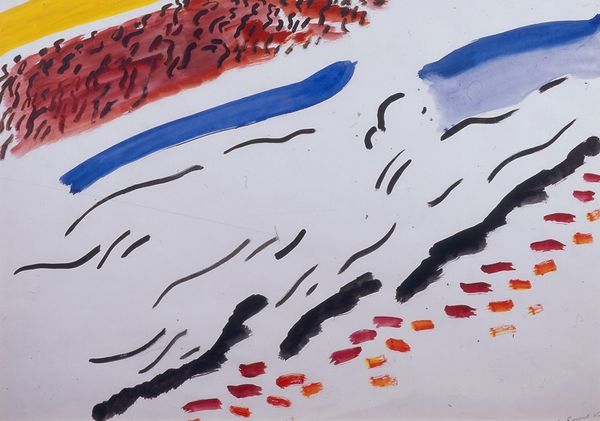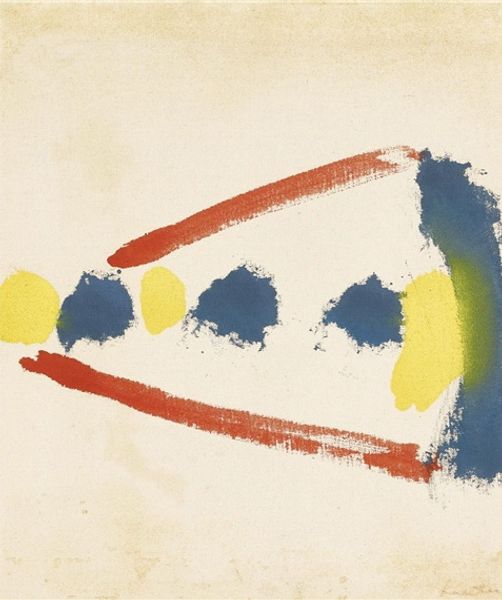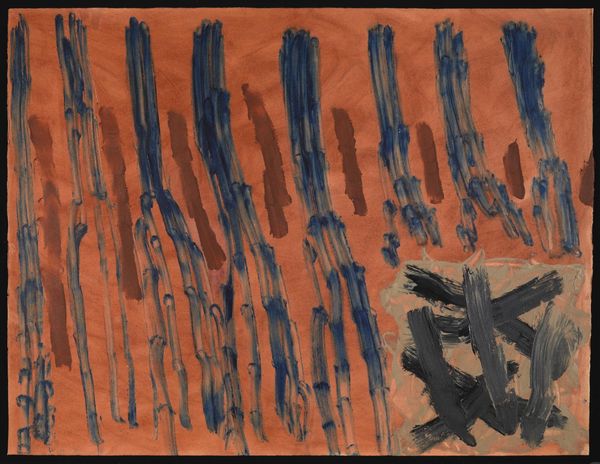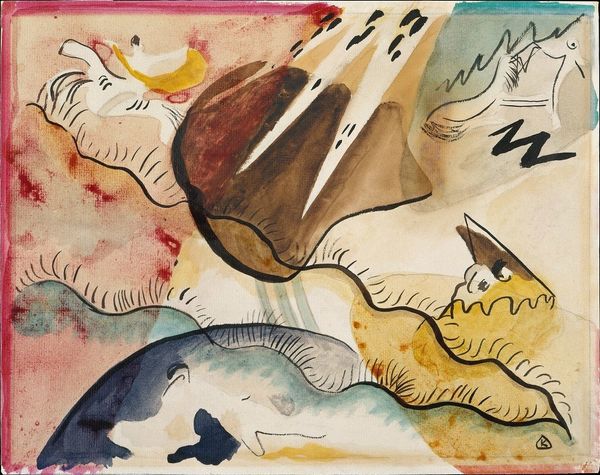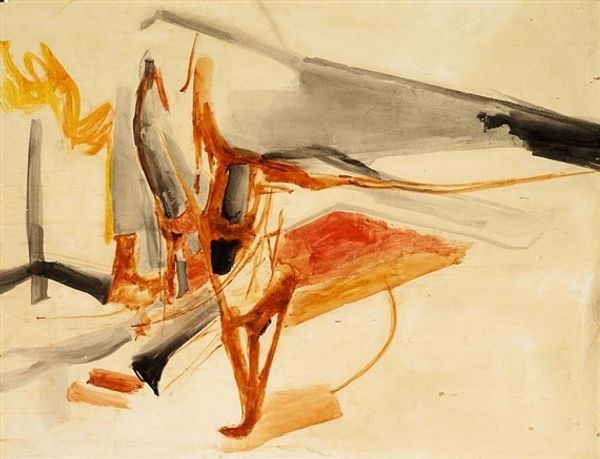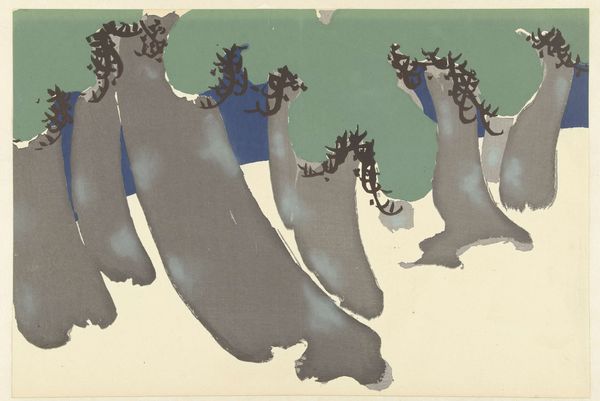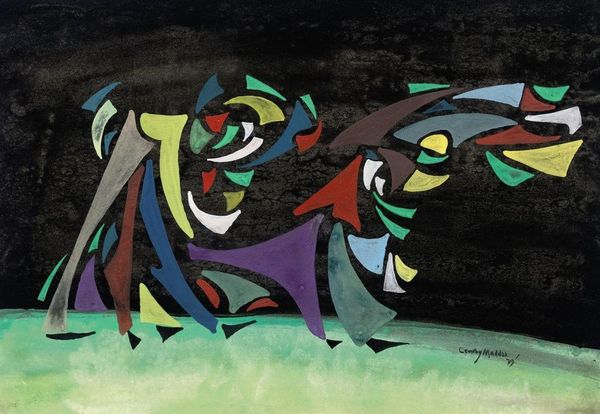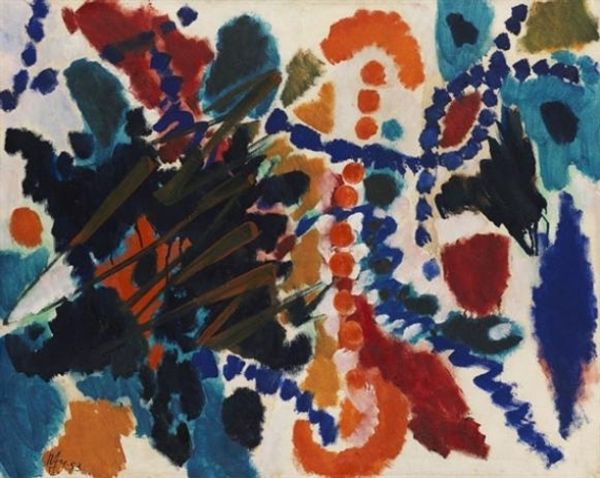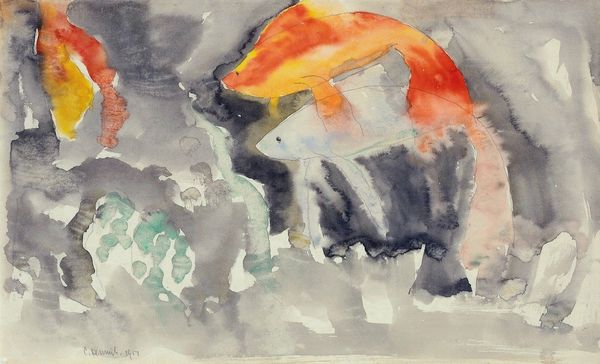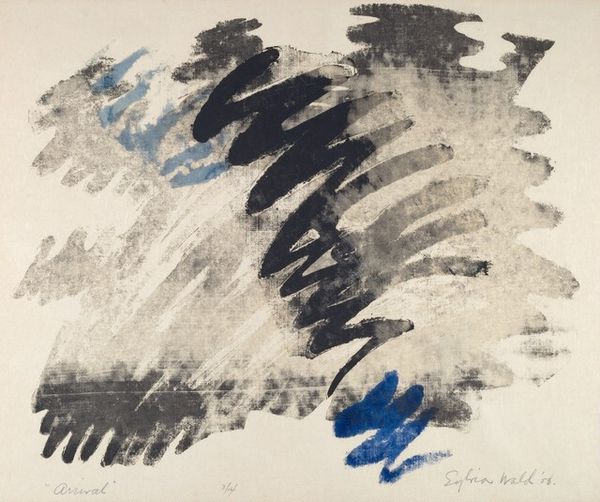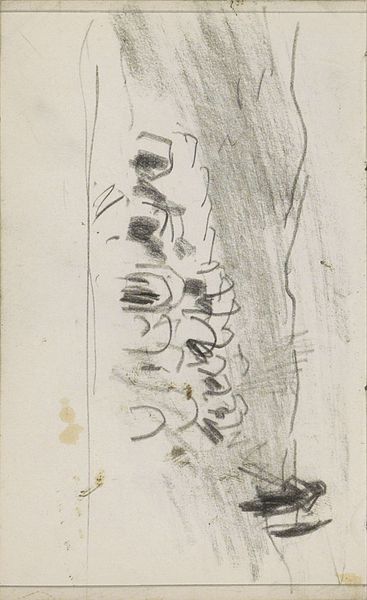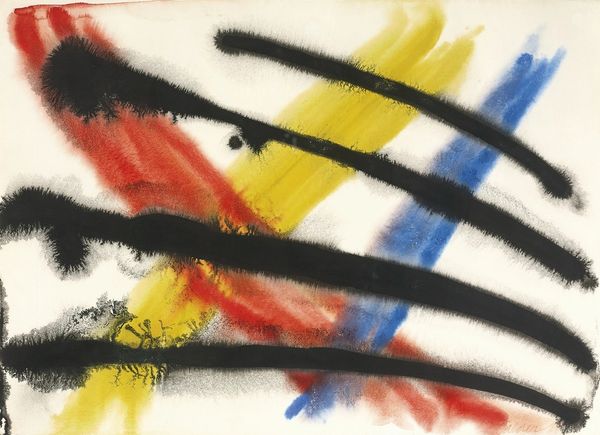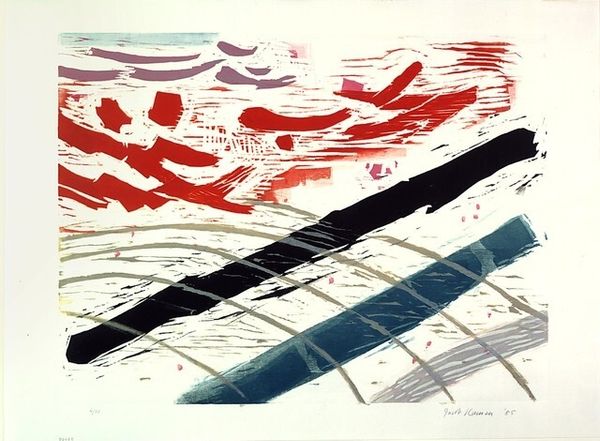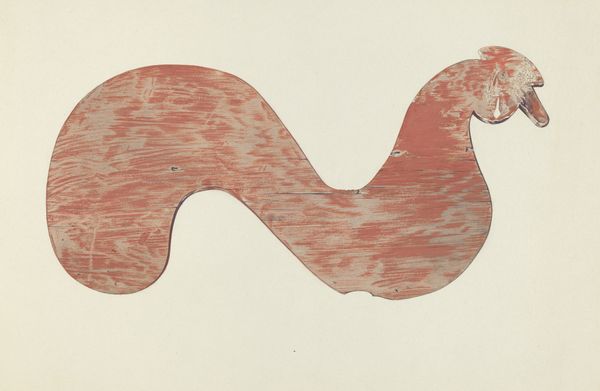
watercolor, gestural-painting
#
action-painting
#
abstract-expressionism
#
watercolor
#
gestural-painting
#
abstraction
#
line
#
gutai
Copyright: Kazuo Shiraga,Fair Use
Editor: This watercolor, titled "Untitled" by Kazuo Shiraga, really jumps out. The layered, almost seismographic lines, feel both chaotic and carefully constructed. How do you interpret this work, considering Shiraga’s context? Curator: Well, considering Shiraga's involvement with the Gutai group and their emphasis on performance and materiality, it's useful to examine how this piece might function within the broader socio-political context of postwar Japan. Can you imagine the actions that would be needed to create it? Editor: Yes, the sweeping lines suggest a very physical process! What does that tell us about its role in the art world? Curator: Shiraga and the Gutai artists were questioning traditional art institutions and pushing for a new artistic vocabulary after the war. Action painting, like this, becomes a powerful statement. Instead of art as representation, we have art as evidence of an event, a physical engagement. Museums shifted and started presenting them! Do you notice how the colors aren't blended? Editor: Yes, the colours are distinct. How do the media help underscore Shiraga’s statement? Curator: Exactly! By using unconventional techniques and often humble materials, Gutai artists critiqued the elitism associated with high art. Shiraga’s piece underscores the idea that art can be made by anyone, anywhere. Also, this abstract approach dodges censorship problems common in postwar Japan by focusing on the visual. Editor: That's fascinating. I hadn't considered the political aspect so directly. The energetic, raw quality feels a lot more deliberate now, almost defiant. Curator: Precisely. Understanding the cultural and institutional context reframes how we see the artwork and its historical value. Editor: I’ll definitely be taking that historical perspective with me when viewing abstraction moving forward. Thanks for sharing your insight!
Comments
No comments
Be the first to comment and join the conversation on the ultimate creative platform.
